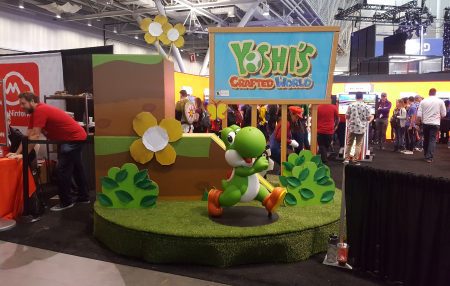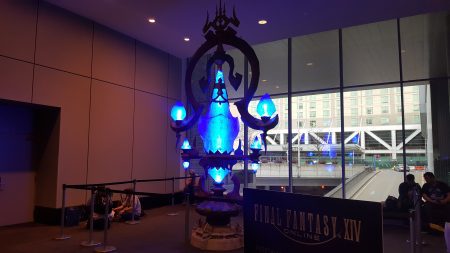The Best and Worst From Boston’s Annual Gaming Expo
PAX East has come and gone. In the days following the trade show, The Punished Backlog’s Kei Isobe sat down with fellow writer David Silbert to discuss the good, bad, and ugly of this year’s show.
Looking Back on the Con
Kei Isobe: PAX East 2019 is officially over (has been for a few days, I suppose) and now that we’ve all recovered, I wanted to do a bit of a dialogue on the weekend. How would you sum up your overall experience at PAX this year?
David Silbert: Two words: indie heaven. It feels like PAX has slowly but surely scaled down its AAA presence in favor of smaller games and showcases. To be fair, PAX East never was the bastion for large-scale games — takes place too far away from E3, both physically and timing wise. Even in its heyday, AAA titles were usually relegated to behind-closed-doors demos, and the playable ones weren’t usually worth the long wait times (The Last of Us being the clear exception, at least personally). Finally feels like we’ve reached the end point for PAX East conventions, which is to have a whole lot of indies on display, nearly all of which have something interesting to offer in their own right.
How was your time at PAX? I know you were there for half the days I was — did it feel like the right length of time for you?
KI: I had a great time as well. I think the balance we struck between waiting, mingling, and actually playing games was good, though as you’ve noted, the AAA-presence has strongly waned as years have gone by. I actually think this year we may have swung a bit too far in the other direction — if I remember correctly, this is the first year that passes didn’t sell out immediately, and the expo hall did feel a bit more sparse than it has in years prior. With the advent of digital queues (via mobile apps), I kind of wish there was a bit more AAA to balance it out. Gearbox probably actually pulled a smart move by being basically the only AAA-level announcement of the weekend, though they didn’t have anything playable. They really dominated the news cycle there for a good bit.
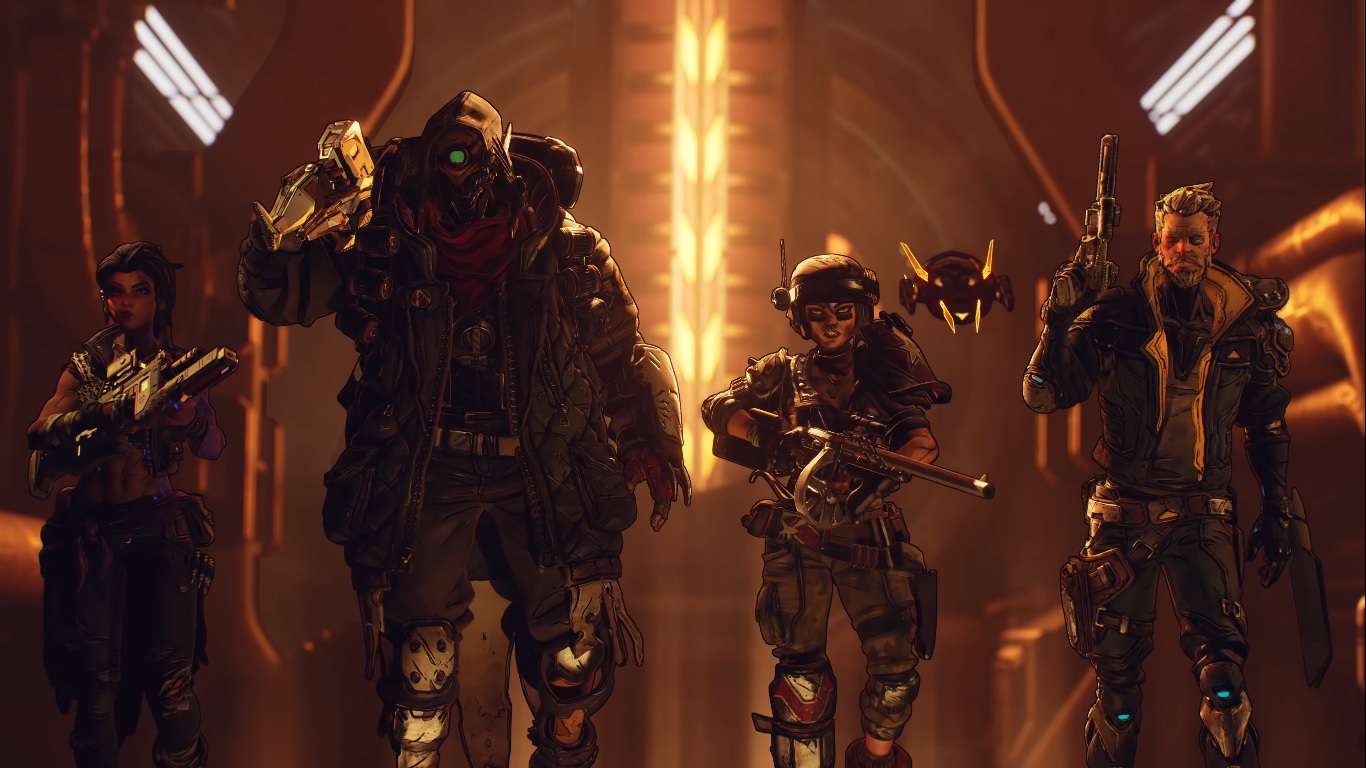
What did you think of the panel presence this year? I know you went to Gearbox and a few others, and I only went to the speedrunning one, “Speedrunning: Proving Once Again that Corners Aren’t Real,” which was more entertaining than informative.
DS: It’s funny. I’ve always sort of been disappointed by PAX’s selection of panels. Not to say there aren’t some good ones; to this day, I still look back fondly on a live demo of Deus Ex: Human Revolution that you and I attended yeeears back. But in general, panels have either been slim pickings at PAXes past, or just scheduled for the absolute worst times… like at noon, or right before the expo hall is about to close.
Thankfully, this time around, there were some decent options. Gearbox’s panel was a bit of a wash — far too much waiting for such a small reveal — but the publisher was certainly generous with its audience, doling out Borderlands: GOTY Edition and The Handsome Collection game codes like a suburban mother on Halloween. The second panel I attended that day, “Scrappy AF: How the Hustle is the Key to the Game,” was also a solid, albeit foul-mouthed, affair. The speedrunning panel was easily my favorite, though. Ran right after the hall closed on Saturday, giving attendees something to look forward to at the end of the day without forcing them to choose between the panel and the show floor. The runs were exciting, the panelists were charismatic and well-versed in their fields of expertise, and it had a high-energy crowd, to boot. PAX doesn’t always nail the panels (it usually doesn’t), but this one was a model example of a panel done right. Hopefully we get more like it in the future.
KI: Yeah, the developer panels have always been a lot of waiting, and not too much else. The Human Revolution panel was fun, and I remembered we got a nice red tie out of the Hitman: Absolution panel. Generally I think the non-industry panels have always been more fun; I remember we attended a “Best RPGs” discussion panel some years back (I think Jason Schreier said Fire Emblem: Awakening was the best Fire Emblem game, though, which nearly tilted me off of the face of the planet). The speedrunning panel was a great way to unwind after a long day, and I think in future years prioritizing those kinds of panels will be more of a priority than getting, say, a one-hour exclusivity period on a trailer or announcement for a new AAA-game.

Those Concerts, Though
DS: I have to ask: Now that we’re a week or so removed from the festivities, what were your thoughts on Saturday’s evening concerts?
(For readers who aren’t familiar, each PAX weekend, the con enlists three video game musical groups to perform back-to-back in a massive, 3+ hour concert for attendees. Past artists have included the likes of Jonathan Coulton, Super Guitar Bros., and Triforce Quartet. This time around, we were graced with The Doubleclicks, a duo focusing on gaming-inspired folk music; Bit Brigade, a band that plays the soundtrack to video games while simultaneously speedrunning them; and Video Game Orchestra, a mish-mash of orchestral ballads and heavy rock.)
So, yeah. I’ll chime in after you, but my impressions were… very hit or miss this year.
KI: I thought the Doubleclicks were cute. They weren’t exactly on-brand for a video game convention, but they weren’t off-brand either, and they were at least fully aware of that fact. I think their set was around 30 minutes, and it was a fun opener. However, they definitely weren’t… apropos for what followed, let’s say.
Bit Brigade was pretty fun. Very intense, super energetic, and Mega Man 3 is a reasonably fun all-bosses speedrun. It did get a tad repetitive at the end, though. The set length was a solid 45 minutes, but the menu and transition and victory themes get repetitive after the nth time. Plus, I felt like many notable, famous Mega Man themes didn’t get the play time they deserve, but that’s a personal gripe.
VGO… well, I’ll let you say your piece first.
DS: Agreed on both your takes. Cute, fun, inoffensive for the first act, even if not super related to video games themselves. Impressive second act, but definitely could have been about half as long (not sure how feasible that’d be, though, given the whole speedrunning aspect).
Thanks for giving me the floor for the third act, however, because I’m about to pop off.
We’ve seen VGO, what, like two or three times prior to this concert? At least three times — we’ve been going to PAX East since 2010, and even with me missing two shows (2016 and 2018, I believe), that’s still eight shows, and at least six to eight concerts.
Anyways, we’ve seen them quite a bit. And their charm (at least, to me), has always been that they were the ones to close out the concert. Sometimes they headlined, I believe, but mostly they were the Jonathon Papelbon of the night. And usually, they would deliver, providing an assortment of tested tracks from beloved series, including Mega Man, Street Fighter, Castlevania, Final Fantasy, and Chrono Trigger/Cross. Sometimes a little too much rock for my taste, but I always listened with an open mind and open ears, due mostly to the sheer musical dexterity on display. Suffice it to say, VGO did video game music justice.
This concert’s offerings were, ugh… just weak. Not only were the songs less iconic in general than at past concerts, but they were heavily dominated by Capcom games — and not the ones you’re thinking of. Second half of the set was pretty much just Street Fighter V, Resident Evil 2, and Devil May Cry… lots and lots of Devil May Cry.
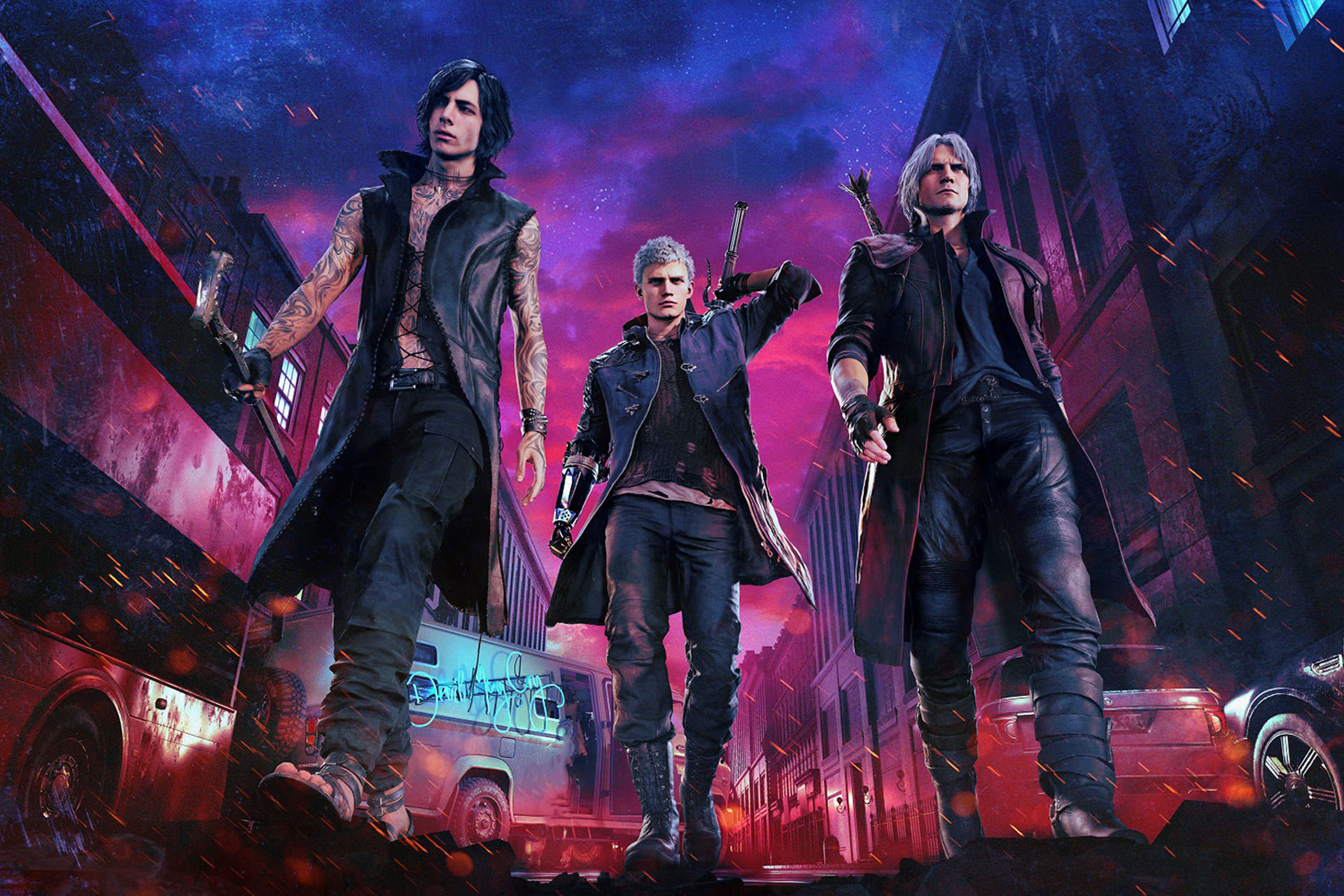
Not to rag on Devil May Cry — the series has some bonafide bangers, and I enjoyed a portion of VGO’s depictions of composer Kota Suzuki’s rock ballads and blood-pumping metal anthems… but only a portion. A small one, at that.
I get that Devil May Cry 5 just came out. I get that a Devil May Cry concert tour, The Devil Awakens, kicked off PAX weekend with a performance in Boston that Thursday evening. I get all that, and yet there’s a reason why I didn’t attend said concert: I’m not a big fan of the music.
So for the closer of Saturday’s PAX concert to essentially offer up a retreading of a rock and heavy metal (emphasis on the heavy metal) concert that I had no intention of attending, literally two days back… yeah, I was pretty disappointed.
KI: Yeah, I joked during the concert that this set must have been sponsored by Capcom, because they played a bunch of recent Capcom releases, and not exactly well known ones at that. Did you know that Resident Evil 2 had a theme song? I didn’t, but I guess I do now (note that Capcom actually does have an official concert tour in collaboration with VGO, a fact I didn’t know during the concert but certainly makes a lot of sense now).
They did open with “Escape from the City” from Sonic, the Chrono Trigger main theme, a pair of Persona bops, and a quick Mario ditty as a tribute to Reggie, but that was it in terms of really iconic tunes. The rest of the concert was basically a Capcom heavy metal concert, which wasn’t what I signed up for. The energy was certainly there, but this was definitely not in line with their performances at previous PAXes.
Also, I waited all night for them to play “Devil Trigger” and then they kind of ruined it for me, having the male vocalist sing all of the verses. The female verse is the best part! Actually, the female vocalist — I believe her name is Ingrid –didn’t have a lot to do the entire time. Kind of disappointing. Not to drag heavy metal — just because it’s not my main listening genre doesn’t mean I don’t enjoy it in spots — but the songs that they did cover in a heavy metal style also were kind of worse than the originals for me. “Survivor,” the theme to SFV, isn’t a particularly well known song, but I preferred the original to the heavy metal VGO cover (also, “Indestructible” from SFIV is straight up better — not an unpopular opinion, but it had to be said).
Overall, I was disappointed too, although the energy was infectious. I hope next year they return to some of their more traditional fare.
Let’s Talk About Games
KI: Pivoting to games here, let’s talk about what we played. You played more than I did, but we did have a decent amount of overlap. I think my favorite game was an indie Metroidvania game called Kunai, though I think this may be an example of a great demo compared to the field.
What I loved about Kunai is that it was fast and had a lot of movement options. It had a double jump, a super dash, a hover, an “enemy bounce” (added jump height when you attack downward into an enemy), wall jumps, wall clings, a swinging mechanism involving grappling hooks (grappling kunai), and even a trampoline jump mechanism. It was fast, responsive, and it gave the game a really good feeling of speed and forward momentum, which I love in my platformers. However, I exclusively played the time trial portion of the demo, not the actual Metroidvania part, so this may be a game that lives and dies on its overworld and level design. I know you liked Kunai too, but what did you think of the main part of the game?
DS: Yeah, I had a good deal of fun with Kunai as well. The main demo was interesting in its own right, focusing a bit more on navigating corridors to find and obtain certain items and abilities (such as your katana weapon and your double jump). It was definitely on the easy side — the demo culminated in a boss battle that required hooking onto a boulder in the center of the room to reach and damage the enemy — but I certainly see the potential, especially given the excellent controls and mobility options you highlighted earlier.
Plus, when you consider the fact that the game was announced like a week before PAX, it really drives home the excitement of it all. It’s hard not to get hyped up about a new, shiny game you’ve just got your hands on, and this past weekend had plenty in that department. Kunai, certainly, but also two other just-announced games that you and I both played: Cyber Shadow, published by Yacht Club Games, and Panzer Paladin, developed and published by Tribute Games.
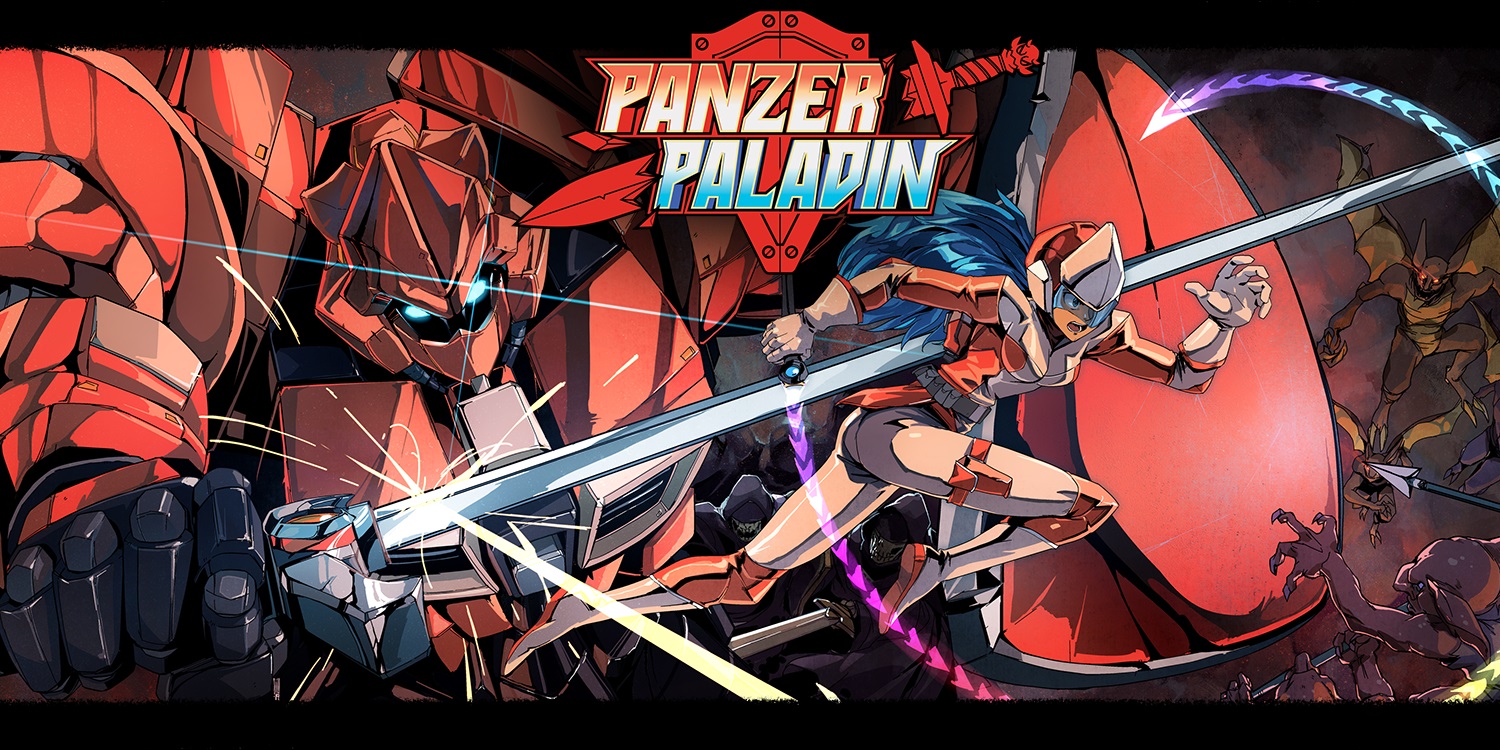
KI: Kunai, Cyber Shadow, and Panzer Paladin were all platformers (though Cyber Shadow and Panzer Paladin were level-based while Kunai was not), but I think all three played differently, and I’m curious to see how they’ll differ when they all eventually release. Panzer Paladin was the slowest, and in my opinion the easiest, though the mechanic where you can play as the pilot, not just the mech, was cool. However, it didn’t have that much in terms of extra mechanics, and I found myself wishing for a run button, or some sort of other movement option.

Cyber Shadow, on the other hand, had a lot of different attacks, but to me it felt like it rewarded inching forward through levels, which isn’t exactly my preferred style. Then again, I didn’t beat the level while you and PJ did, so I suppose I can’t exactly back up my words. The trailer showcases a much more fast-paced game than what I played and saw, however, so it may be another case of the vertical slice not being as indicative of the final product. It did look incredible, though.
Which of the three platformers you played was your favorite?
DS: So I think, in terms of level design and overall gameplay polish, I liked Cyber Shadow the best. It was challenging, but not frustratingly so, and slicing enemies and using the various mana-based skills felt speedy and satisfying. The addition of power-up items you could find hidden in the environment also provided a bit of a classic NES feel to the experience, which I really appreciated. Just, again, a very polished experience.
However, in terms of ideas and mechanics, I actually feel Panzer Paladin was the clear favorite. I think you might be taking the game’s mech/pilot system for granted, a bit. What other 2D side-scroller has played with that concept, let alone been successful doing so? The fact that you build up an arsenal of weapons with set durabilities was also intriguing. Sure, I don’t think people necessarily get excited about the idea of weapons breaking mid-combat (just ask any of the millions who have played Breath of the Wild), but there’s plenty of room for that to be a nuanced, rewarding mechanic; especially if the developer delivers on the promise of having a wide variety of weapons, each with its own properties and abilities. If Cyber Shadow is simply a super refined 2D side scroller, then Panzer Paladin is a side scroller looking to try several new things, all while taking from some of the best 2D-platformers from the past 25 years (Symphony of the Night, Shovel Knight, Blaster Master Zero, just to name a few).
At the end of the day, though, I really enjoyed all three.
KI: Yeah, I didn’t touch upon the weapon collecting/using/breaking cycle of Panzer Paladin. That’s because I didn’t find the weapons to feel particularly unique; they didn’t feel particularly distinguishable from each other, and I didn’t find a lot of use in each weapon’s special ability, which was the one-time-use spell (I think you and I both messed up that tutorial and ended up just clearing that room without using the claymore’s intended AoE spell). I could be misremembering, but I thought every weapon had the same swing animation and it was just a range difference.
And in regards to the switching, that mechanic has a ton of potential but I also worry about how well it’ll be implemented in every part of the game. When you think about it, you’re basically designing around a whole second character, for the entirety of the game. The one section of Panzer Paladin that we did play where we had to play as the pilot was definitely extremely choreographed to display her whip-swinging capabilities; I do wonder about whether it’ll be fun to play as her in all scenarios.
As you said, though, I enjoyed all three games as well. I’m excited to see more of them outside of the vertical-slice-demo environment.
DS: Speaking of games announced at or just before PAX, we also got the chance to play the newest game from developer Le Cartel (of Mother Russia Bleeds fame) and publisher Devolver Digital: Heave Ho. A cartoonish multiplayer game for up to four players, Heave Ho is a co-operative experience that requires getting you and your teammates to a checkered flag at the other side of the screen.
Of course, as is typical for a game quirky enough to capture the attention of Devolver, nothing in Heave Ho is ever so simple. The hook in this game? Your characters have no legs or body — just a head, and two arms. As you could imagine, this means that navigating to the flag is easier said than done. It typically involves literally dragging yourself across the terrain, flinging teammates using momentum and well-timed button releases, and making dastardly leaps of faith in the hopes of clawing onto a hunk of scenery to avoid falling to your untimely death.
It’s chaotic, it’s intuitive, yet simultaneously (and intentionally) cumbersome, it’s somewhat crass… and it’s an absolute blast of a game. Gave me Snipperclips vibes, but with faster gameplay and more possibilities for pure and utter mayhem.
What did you think?
KI: Yeah, it honestly looked like it could be an alternate mode in Snipperclips, what with it’s paper-y aesthetic and all, but I have to say I liked it a lot more than Snipperclips. It was just a lot more intuitive to grasp. There was a bit of a learning period where everyone had to get on the same page — it’s one of those pseudo-cooperative games that can be really annoying if one person is messing it up for everyone else — but once all four players are in sync, it’s both hilarious and fun at the same time. The controls are good enough that you can generally do what you’re thinking of, but not so precise that you totally avoid these massive, chaotic situations, which lends itself well to the “cooperative-competitive” style of game.
A Taste of Noir
Let’s switch gears and talk about a game that you and I had differing opinions on — Tales of the Neon Sea. I came away unimpressed while you were the opposite. What intrigued you about this game?
DS: Well let me say, first off, that I’m a sucker for noir themes in games — well, really, I’m a fan of noir in general. Chinatown, L.A. Confidential, Fargo, Taxi Driver, Double Indemnity… those’re all phenomenal films. Dashiell Hammett, Raymond Chandler, Chester Himes… they’ve all put forth incredible works of literature that’re still gripping, decades later.
Noir in games, though, is still a relatively new concept. Sure, we’ve been blessed with titles like Max Payne, L.A. Noire, The Wolf Among Us (gone too soon, Telltale <3), and my personal favorite, Hotel Dusk, but I can still count the good noir games I’ve played on one, maybe two, hands.

Tales of the Neon Sea might not be better than the games I just mentioned, but it looks like a solid addition to the genre. It’s a point-and-click, which is by nature a bit of a slow burn, but so are all noir stories, in essence. The demo we played perhaps leaned a bit too far into the mundane and banal, admittedly, tasking players with navigating a private eye’s apartment to concoct a medicine for his nasty hangover. However, the puzzles were interesting enough, and a post-demo trailer gave an exciting looking into how the plot will heat up over the course of the campaign. And, most importantly, it absolutely nails the atmosphere, mashing traditional hardboiled noir with cyberpunk aesthetics and providing some gorgeous backdrops in the process.
Best of all? A demo is available now on Steam. I highly encourage fans of the genre to see for themselves whether it’s up their alley; nothing to lose by giving it a go.
KI: I should probably check out the demo on Steam. I don’t want to rag on games too much, and this was a one-man project that’s being translated from Chinese into English. I also think this is an example of really choosing the worst sort of vertical slice — one that’s completely divorced from the themes and style of the game at large. I don’t expect most of this game to be about digging through this guy’s apartment to make a hangover cure… but that’s exactly what this demo was.
The pixel art was glorious, though, and what little hints of the setting we got — airborne taxis, futuristic chemistry, the classic neon signage, was intriguing. At the same time, the writing wasn’t the sharpest. I remember specifically one bit of dialogue that was the clunkiest sort of “NPC describes something the main character should know, verbatim” exposition, which really pulled me out of the experience.
I was way more invested in The Sinking City, which was that Lovecraft-inspired supernatural mystery game that actually had a big presence at E3. A 3D open-world game, The Sinking City looks great visually, and it had some really fleshed out “investigation” mechanics that I want to see more of. The protagonist can look into the past and see things that are hidden to the mortal eye, which involve things from recreations of the past to hidden symbols and evidence that can be used to connect the dots. Conclusions are stored like inventory, and can be connected to each other to formulate more fleshed out ideas and possibilities, akin to Telltale’s Batman games. Finally, there was a mechanic that involved replaying a construction of the crime itself, somewhat like Remember Me, where you had to suss out the order in which several micro-interactions happened in order to reveal the true scene. My time with The Sinking City ended in a short chase that led me to the grisly conclusion to the first mystery of the game. All in all, it seemed like a more concentrated, thematically cognizant version of Murdered: Soul Suspect. Did you have any thoughts?
DS: I enjoyed The Sinking City as well. Loved the setting and, as you said, it definitely had a Murdered: Soul Suspect feel — without, y’know… actually being terrible.
I’m not sold on it, though. The idea of an open-world game in which you tackle cases, find clues, and confront suspects sounds great on paper. However, I have my doubts that it’ll make for a compelling gameplay experience. When I mentioned L.A. Noire’s open-world design during our time with the game, the Sinking City rep seemed to agree with the comparison. As much as I love that game, though, the open world itself was one of the least interesting aspects of the experience; very large, without a whole lot to do.
In all fairness, the rep made sure to temper expectations, saying that it’s open, but more as a way to provide a sense of scale to the narrative — in other words, don’t expect any side missions or activities. That said, I’m still having a hard time seeing how the open-world design will lend itself to a better experience, at least based on what we’ve seen so far. A bit too much of running back and forth between points A and B for my taste.
Don’t get me wrong — I certainly think an open-world detective game could be cool. I just think it has to be done correctly. Perhaps this’ll be the one to crack the code? Time will tell. At the very least, the story, characters, and atmosphere seemed intriguing. The game also controlled well, and even had some light shooting mechanics, though from what I played of the demo, the shooting seems like a rather rudimentary part of the overall gameplay experience.
Plus, it’s set in Massachusetts (albeit in a fictional town). Whether you see that as a plus or a detriment is up to the player; Murdered: Soul Suspect was set in Salem, and D4: Dark Dreams Don’t Die was set in Boston, and we both know how those games went over… Personally speaking, I’m willing to give it a go just to see if third time really is the charm. (We’re an Irish state, y’see, so luck is important to us.)
KI: Yeah, I can definitely see the potential for Sinking City to have a lot more “fluff” than is strictly necessary. Lots of running back and forth for little gain. At the same time, the potential to explore a crime scene in a 3D space and to recreate past events, form connections and conclusions, and so on is very promising. We’ll see if Sinking City is truly open-world, or if it’s a more tightly controlled 3D space that’s designed for us to find the clues and connect the dots.
Reflection Time!
That’s all of the major games I wanted to cover, so I’m going to pivot again. If you could do anything differently about this weekend, what would it be? I was pretty satisfied with my experience overall, but I’m considering going on Thursday next year (if they do the same four-day setup) because the way you described the expo hall as being more sparse is pretty appealing to me. I personally get convention fatigue after two days, but I could see myself doing Thursday/Friday/Saturday, and it would open up the possibility of seeing more interesting panels as well.
What do you think?
DS: I think going on Thursday is a good call. It was still crowded, to be sure, but it was a more manageable crowd than any of the other days. Even Sunday felt packed, and when you’re trying to play and cover as many games as possible on the floor, that lost time in lines quickly adds up.
Honestly, I think I’m already starting to do one of the things I’d do differently for future PAX events: Don’t get hung up on the AAAs. Days Gone, Control… those games are always going to be the most sought after on the show floor. However, as PAX’s AAA presence dwindles and attendance numbers continue to climb, it becomes harder and harder to justify waiting in two-hour-plus lines for 20 minutes of gameplay. Especially when, odds are, these AAAs are closer to release than a lot of the smaller, independent games on display.
This is less of my own choice, and more a reality of a growing con that is unfortunately timed within the gaming calendar year. E3, PAX West, Gamescom, San Diego Comic-Con… those are all places to find the latest and greatest AAA titles. PAX East? That one’s for the smaller guys and gals… and I’m increasingly fine with that.
Only other thing I’d do differently, perhaps, is to invest in some additional “fun” panels, as you said earlier. Skip the “exclusive announcements!” ones that provide a literal 10-second exclusive reveal, if that (the Borderlands 3 trailer was simultaneously live-streamed), and just focus on panels that celebrate the joy of gaming.
I also plan to continue going all four days — it’s tiring, but let me tell you, I did not run out of things to see and do this year. Though, next time, hopefully you and I’ll be there in an official media capacity. Gotta get that extra hour of show floor time in the mornings!
KI: That’s definitely the goal for next year. This was probably my favorite PAX of the last couple of years (since it really switched to the indie-games vibe), and I agree with you that we should probably give up on the AAA-demo experience (even the advent of mobile queueing didn’t solve a lot of those problems).
And as always, attending PAX never fails to gets me amped to play and write more about games. Great show, and can’t wait for next year.
DS: Agreed on all fronts. Great time to be a PAX attendee.
Thanks for reading our thoughts on this year’s PAX East! For more on PAX, be sure to check out Day 1, Day 2, Day 3, and Day 4 of David’s four-part PAX East Weekend at Dave’s special.
And be sure to check back for more PAX East coverage in the coming days, as David provides his personal list of the very best games he played at the show this year.

















